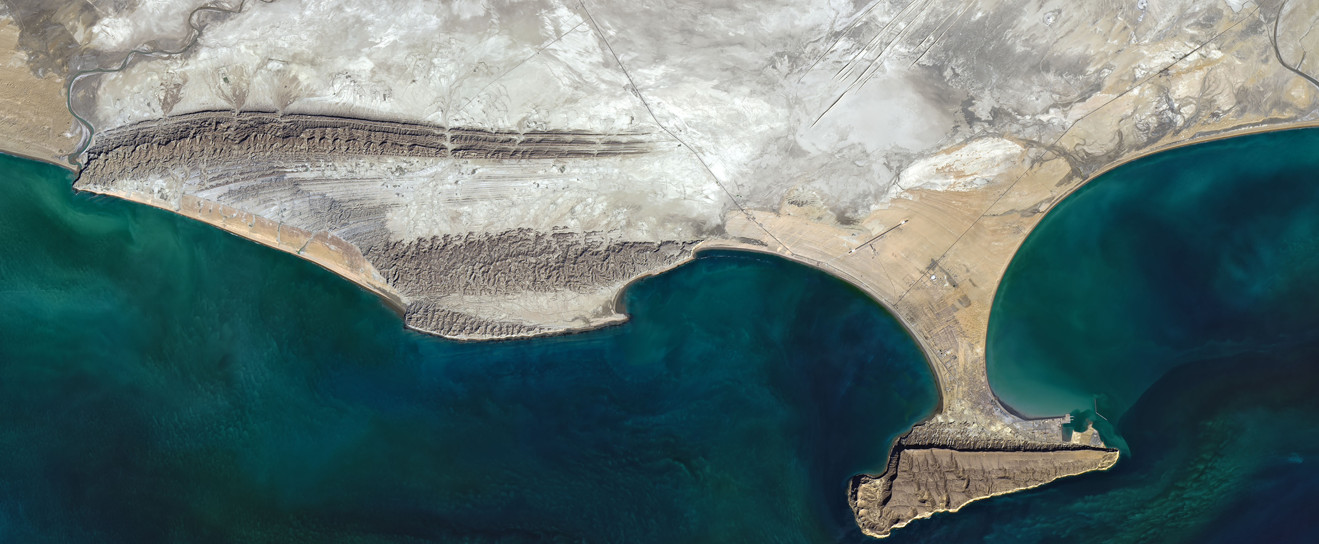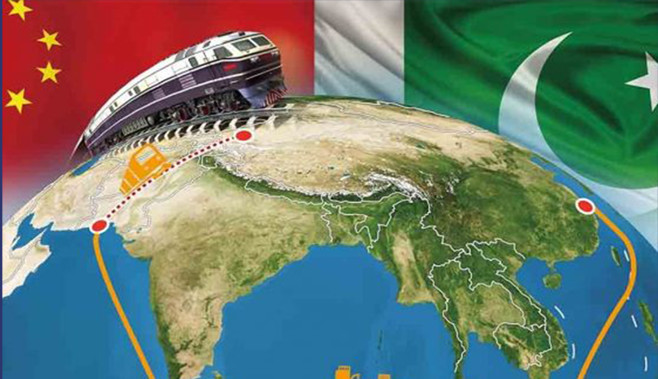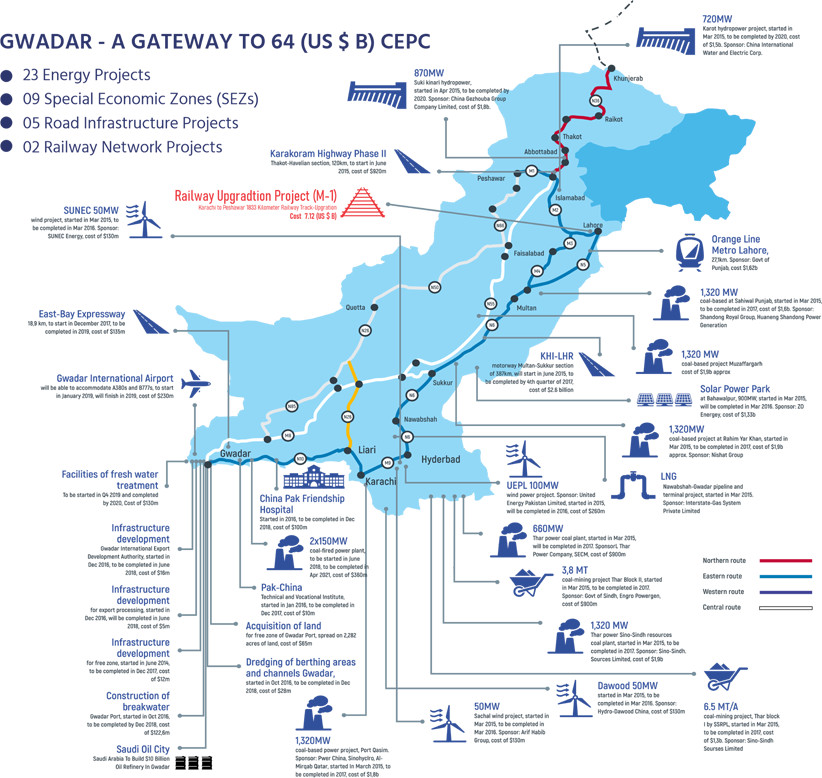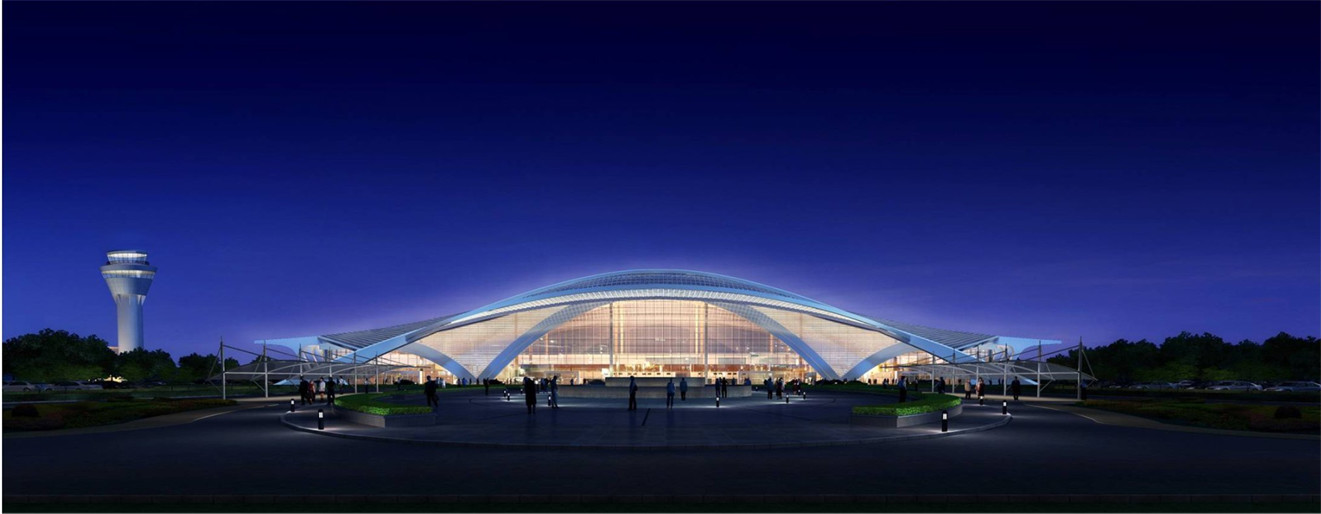Importance of Gwadar, Pakistan

Gwadar is a port city on the southwestern coast of Balochistan, Pakistan’s largest city Karachi connects with Gwadar through 650 KM long Makran Coastal Highway. Economic analysts predict that Gwadar, is rapidly turning into the main hub of international trade with everlasting business and commercial activities, which has all the potential to play a vital role in boosting the economy of Pakistan and the whole region. Gwadar has one of the deepest sea-port of the world, and the Government of Pakistan has declared it a duty-free port while a free economic zone has already been established there. This step has not only enhanced its commercial worth but has also accelerated the pace of development to an incredible speed. It is located in a wide-open sea at the entrance of Strait of Hormuz where the mother vessel can directly dock. It can connect with more than half of the world through CPEC via roads, railways, pipelines, and sea-routes. Gwadar provides enormous economic opportunities not only for Pakistan and China but also for other countries of the regions, like Central Asian Republics, Europe, Turkey, Iran, India, the Middle East, Gulf States, and Africa. Owing to all these aspects Gwadar is going to be the new magnet of the world trade soon. The prime commercial locations of this city, like Central Business District and avenues like Marine Drive, Padi Zer Boulevard, Balochistan Broadway, and Jinnah Avenue will be the topmost venues of mega national and multinational business organizations, entrepreneurs and traders in multiple business fields from all over the world. Gwadar is an ideal place to emerge as an attractive tourist destination due to its beautiful virgin beaches, sea life, large open spaces, and its proximity to the Gulf. The beaches in the Gwadar area are the finest in the world, offering sunshine round the year. These beaches can be developed and exploited by the hotel, recreational, and tourist industry to their high prospects. Gwadar Development Authority (GDA) has proposed an exclusive self-sustaining tourism resort for the foreign tourists and beach lovers on the west bay.
IMPORTANCE OF CPEC
CPEC-GLOBALIZATION OF ECONOMY

China-Pakistan Economic Corridor is a framework of regional connectivity. CPEC won't only benefit China and the Islamic Republic of Pakistan however can have a positive impact on Asian country, Afghanistan, India, Central Asian Republic, and also the region. The improvement of geographical linkages having improved road, rail and air transport system with frequent and free exchanges of growth from people to people contact, enhancing understanding through information, cultural and regional information and culture, the activity of upper volume of flow of trade and businesses, producing and moving energy to possess more optimum businesses and improvement of co-operation by the win-win model can end in well connected, integrated region of shared destiny, harmony and development. China Pakistan Economic Corridor is a journey towards economic regionalization within the globalized world. It will initiate peace, development, and a win-win model for all of them. China Pakistan Economic Corridor is the hope of a better region of the longer term with peace, development, and growth of the economy. CPEC is a jewel project that undertakes the supervision of the Chinese primary One Belt One Road initiative. For Pakistan, it is a huge boost in development. The estimated worth of the CPEC project is $64 billion. CPEC will provide immense benefits in boosting Pakistan’s economy and local infrastructure. CPEC is not only beneficial for Pakistan but it has worth it for China and other countries of the region as well. Trade business is the main source of China’s economy which mostly happens through sea-ports. China has sea on its east side due to which its major commercial activities occur near seaport due to which large population has been shifted to the east side. China has a great interest to distribute its population throughout the country. To fulfill this requirement China must have to build its industrial zone on the west side as well. The presence of Gwadar port on that side is a major reason for this initiative. China can save the logistics cost of transportation through its export via Gwadar. Through CPEC China is connected with Gwadar via Khanjrab pass and can connect with more than half of the world through CPEC via roads, railways, pipelines, and sea-routes. CPEC also providing stunning opportunities to the region to extend their economy. Through CPEC Pakistan has become the most popular destination for investment. A lot of industries are going to be established under CPEC which will assist in the creation of more than 700,000 jobs by 2030. CPEC infrastructure projects will cause significantly reduce the time and cost of transportation.
GLOBALIZATION OF ECONOMY
Globalization is a phenomenon that we all call a new age of revolution in political, economic, and socio-cultural aspects. Economically, globalization has resulted in institutions like the IMF, World Bank, Asian Development Bank, mainly. Amid the institutionalization of economy, China stood up as a single entity driving its smart growth tactics and implementing them as part of its colonial penetration disguised as “soft power growth” further referring to non-coercive power projection, mainly in South Asian Region. Moreover, this phenomenon has greatly influenced maritime trade patterns and amplified trade from 2.37 billion to 5.88 billion freight traveling through sea routes. Being in a leading position, China has been observed as a key strategist in converting individual economies into one economy through its “One Belt One Road Initiative”/ “Belt Road Initiative”.

STRATEGIC BI-LATERAL RELATIONS

The strategic relations have been on record since the 1950s when China was searching ‘developing nations’ to ally with. Sino-Indian war (1962) further solidified China-Pak relations while posing India with a two-front theatre of threat. Pakistan as an ally was a strategic choice adopted by China since beginning to fulfill her motives. China helped Pakistan in building up conventional and nuclear capabilities over years and built up strong security ties with Pakistan following by the purpose of shifting India’s focus of attention from China to Pakistan, partially if not completely, which it did but increasing India’s security dilemma was not solely China’s politics to be blamed on as other factors like Pakistan’s concept of the Muslim nation and nuclear bomb to be a first Muslim nuclear state hence, China is one of the factor and not the only one. Regarding the military cooperation of the two states, China is said to provide technology to Pakistan without consent of the NSG whereas, China’s stance on this says that the transfer of technology was for peaceful purposes. Moreover, the cooperation in the economic sector is evident by the major investment of china worth $46 Billion in the energy sector as a part of the bigger “CPEC”. There is a debate over the ‘real scope’ of China’s CPEC initiative in South Asia and a very highlighting stance pops out that it is in response to the US’ “Asia Pivot” policy.
OBOR/BRI CORRIDORS:
Let’s clear this top-bottom approach that starts from OBOR (One Belt One Road Initiative), encompass CPEC (One of OBOR’s six corridors), and influences Pakistan (one of CPEC’s key geostrategic country). As an umbrella concept, OBOR is based on six corridors, of which CPEC is a part.
1. CPEC (CHINA PAKISTAN ECONOMIC CORRIDOR)
It connects China’s Xinjiang region with Pakistan, geo-strategically by sea, rail, road, and optical fiber.

3. CHINA-MONGOLIA-RUSSIA CORRIDOR
As the name suggests this corridor caters to the three connecting countries through high-speed rail and road links.

5. CHINA-INDOCHINA PENINSULA ECONOMIC CORRIDOR
This program aims to strengthen cooperation among states of the Greater Mekong subregion, in particular by developing transport (motorways, railways and air connections). This initiative will support trade between China and ASEAN members that are already bound by a free trade agreement since 2010. In China, the provinces of Yunnan and Guangxi are the most involved in this cooperation.

2. NEW EURASIAN LAND BRIDGE ECONOMIC CORRIDOR
It connects China, Mongolia. Kazakhstan, Russia, Belarus, Poland, Germany & Netherlands.

4. CHINA-CENTRAL ASIA-WESTERN ASIAN CORRIDOR
This corridor caters energy. The world’s longest gas pipeline i.e., China-Central Asia pipeline already exists which seeks more cooperation in the overall energy sector having in loop Turkmenistan, Uzbekistan, Kazakhstan & Xinjiang to connect the Middle East with the pipeline too.

6. BANGLADESH-CHINA-INDIA- MYANMAR CORRIDOR
The purpose of this corridor is to better connect China with the various economic centers of the Gulf of Bengal, and to increase interregional trade by reducing non-tariff barriers. It also aims at strengthening transport infrastructures and decreasing poverty in this region. This corridor would link Kunming to Kolkata (Calcutta) via Mandalay and Dhaka. However, very little progress has been made on this corridos as India still refuses to join China’s initiative.

CPEC – PAKISTAN ON ROAD TO BECOME ASIAN TIGER?
Pakistan’s vision 2025 foresees the Islamic Republic of Pakistan to be the next “Asian Tiger” of the region. To achieve such heights, it values its basic seven pillars: 1. Sustained Indigenous Inclusive Growth 2. Energy – Food – Water Security 3. Democratic Governance & Modernization of Public Sector 4. Human & Social Capital 5. Growth of Private Sector 6. Development of Competitive Knowledge 7. Infrastructural development & Regional Connectivity Now what these pillars depict in CPEC projection? It can be summed up in four words i.e., Energy, Infrastructure, Gwadar & Industrial Cooperation which means Pakistan’s reason to join CPEC is mutually beneficial for both China & Pakistan. For China, Pakistan serves as a major geostrategic state to pursue the plan accordingly and for Pakistan, being opportunist evaluates this opportunity to carry forward its vision of economic growth. To overcome energy shortages, CPEC’s 56 % portfolio is focused on energy projects that cost around 33 Billion US Dollars. The energy domain is diverse referring to the profit-sharing, energy mix, financing, and operations. Industry being a key factor for sustainable development for the economy of any state, this is the major portion that has been included in the long-term planning. 1. Rashakai Economic Zone 2. Special Economic Zone 3. Bostan Industrial Zone 4. Punjab - China Economic Zone 5. ICT Model Industrial Zone, Islamabad 6. Development of Industrial Park on Pakistan Steel Mills Land at Port Qasim near Karachi Port Qasim 7. Mirpur Industrial Zone 8. Mohmand Marble City 9. Moqpondass SEZ as one unique strength which is the cheapest labor in the region. This point of calibration between Chinese industries and Pakistani manpower can help these SEZ’s for their sustainable habitation without wastage of time and capital.

HOW CPEC WOULD BENEFIT PAKISTAN?

Firstly, it is part of Pakistan’s economic motives to capture economic opportunities to climb up the heights of vision 2025 and its developmental strategy. Gwadar is a gateway to Central Asia & South West extending from the Persian Gulf to the Indian Ocean and Far East. Infrastructural development & energy revival not only prospers and boost economic benefits but allows regional connectivity through railroads, highways, and pipelines. Moreover, the least possible amount of revenues is estimated to be over 100 Billion US Dollars on account of transit revenue per annum leading to hundreds & thousands of employment opportunities. Most of the trade requires sea route to travel therefore, the development of Gwadar port is beneficial in terms of connectivity & beneficial trade transit route. China ha s played its smart power projection role according to its soft growth strategies internationally.
NEW GWADAR SMART PORT CITY PLAN (2017 – 2050)
Most awaited Gwadar Master Plan
MoU signed in Nov 2015 LOE signed in August 2015
Chinese Fourth Harbor Design Institute has been
nominated for Gwadar Smart City Plan
Contract Signed in May 2017
Completed and approved in the 9th JCC held on 5th
November 2019
STRUCTURE & FUNCTION ZONE PLANNING

LAND USE PLANNING

CENTRAL BUSINESS DISTRICT (CBD) GWADAR

PORT OF GWADAR

CPEC will be a game-changer for Pakistan once it is functional. China Pakistan economic corridor worth 64bn $ comprising of connectivity, communication, development, and industrial upheaval. Connectivity between Chinese western half Kashgar with the port city of Gwadar with a total distance of 3000 km. As China is the largest importer of oil and gas from the Middle East and CARs, once CPEC is functional the distance of 12000 km is reduced to 3000 km and further overcoming the hindrance for Chinese ships while passing through Malacca strait. Pakistan which is ergonomically a washy and needs the world attention for foreign investment so CPEC will be the cause of foreign direct investment in the country. At this moment of the potential of CPEC, Khan’s government has considered solving the issue of Gwadar with China. The deep seaport in Gwadar has been referred to as the “gateway city” to CPEC and as a “gateway to Asia. Although on the surface China’s ambitions to develop a bustling waterway on the Arabian Sea appear clear, China also seeks to plant a seed there that foments long-term influence and ownership. Gaining control of Gwadar allows China to connect its land-based transport routes through Islamabad to western China, as well as to construct a crude oil pipeline spanning that corridor. Port control in Gwadar also aids China in stringing together maritime ports, “pearls,” along the Indian Ocean back to Hainan. Still, while access to Pakistan’s port is enticing for connecting its global supply chains, port development alone does not directly provide China with a new commercial hub. The port will be connected not only to all major cities of Pakistan via road but also to the cities of China. After the completion of the Gwadar Port project, it is supposed to provide far more business opportunities than cities like NY, Mumbai, Dubai or Bangkok.
GWADAR AIRPORT
Airport plays a vital role in every city because it makes that city connected nationally and internationally through a channel of air traffic, like as the Gwadar airport is making itself connected with national and international ways. This international airport on the Gwadar peninsula will provide a catalyst for economic growth and development in the region. Pakistan is interested in developing the Gwadar peninsula as a major port and trading area, particularly trade between Pakistan and China. The two countries recently signed eight MoUs, including the Pakistan-China Economic Corridor accord, which covers the establishment of a Special Economic Zone, Free Trade Zone and Export Processing Zone in the region for growth. The New Gwadar Airport is a joint venture between Pakistan, Oman, and China. The Sultanate of Oman provided USD17.5 million for the airport project, whilst China plans to invest USD662 million for land development, seaport, and airport works in and around Gwadar. Pakistan plans to develop the new facility on a 4300-acre land plot 25km away from the existing Gwadar International Airport. The China Communications Construction Company has been awarded the USD246m project, which is exp ected to be complete within 30 months. Construction of New Gwadar International Airport (NGIA), along with allied facilities for new airports that will be capable of handling a combination of ATR 72, Airbus, (A-300), Boeing (B-737) and Boeing (B-747) for domestic as well international routes.

PAK-CHINA FRIENDSHIP HOSPITAL

Red Cross Society of China has constructed a modern 100-bed hospital in Gwadar. Red Cross Society says the hospital will meet the health requirements of workers that will take part in the development of Gwadar. In later stages, the hospital will be expanded to 300 beds. This hospital is a gift from Red Cross China to the people of Gwadar. The hospital is supervised by the Government of Balochistan and Planning, Development, and Reforms Commission. Hospital at Gwadar (Up-gradation of existing 50 bedded hospital, i.e. Phase-II of GDA Hospital to be named as China-Pakistan Friendship Hospital). This project is proposed for the implementation of Phase-II of a 50-bedded hospital constructed under the GDA Business Plan (Federal PSDP). The hospital is planned on 68 acres of land. One out of six medical blocks (each 50 bedded) and almost 20% of the residential blocks are completed. Under the proposed project remaining medical blocks, nursing and paramedical institutes, medical college, central laboratory, and other allied facilities are to be constructed with the supply of medical equipment and machinery. Creating a state-of-the-art medical facility in the port city of Gwadar.
